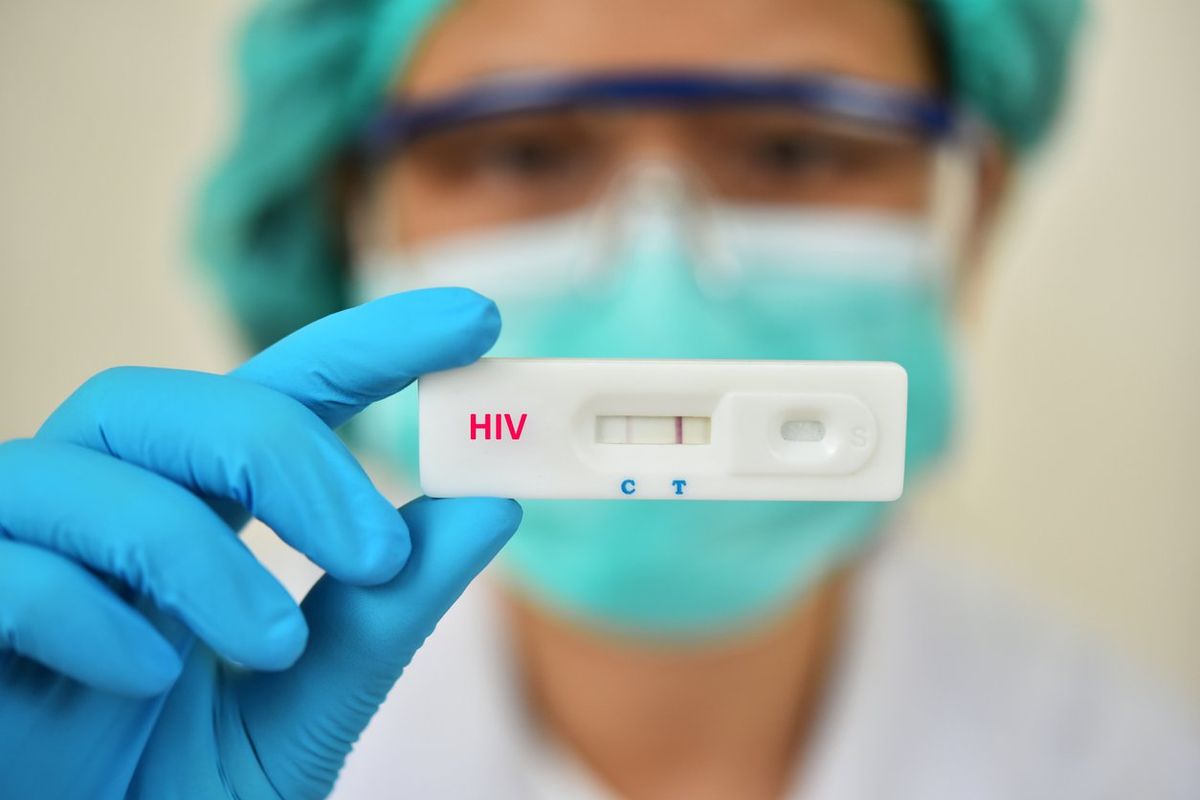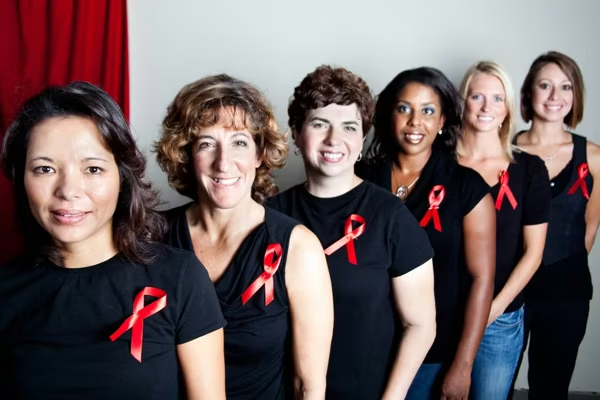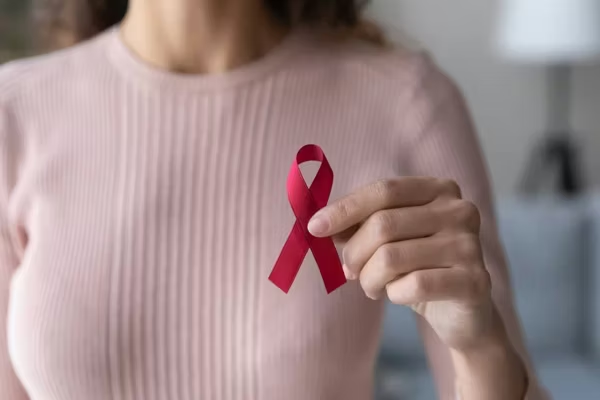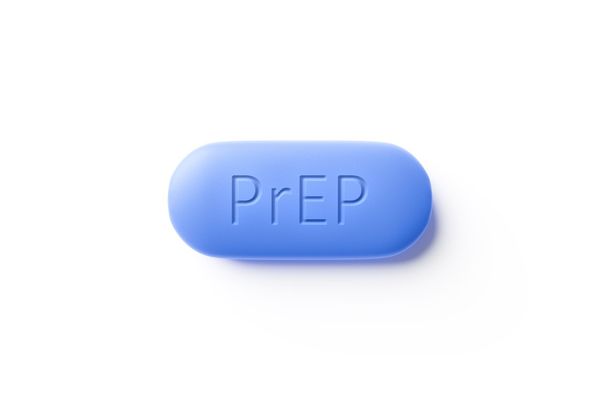Human immunodeficiency virus (HIV) is a type of virus that attacks your body’s immune system, leaving you more at risk for infections. It can be spread by coming into contact with someone else’s infected blood or body fluids.
Some people may wonder if women can get HIV. And the answer is yes. One in 4 people living with HIV in the U.S is a woman.
HIV can hide in the body for years and doesn’t tend to show any symptoms at first. In fact, 1 in 9 women with HIV don’t know they have the virus. The only way to know if you have HIV is to get tested.
Fortunately, the number of women living with HIV has been going down in recent years. But HIV testing rates are low, even among women who are at higher risk for getting HIV, especially those who have anal sex. The pandemic caused many people to skip HIV testing, according to one 2021 study.
In order to bring testing rates up to achieve the 2025 goal of more than 95% of people in the U.S. who know their HIV status, the number of both men and women getting tested needs to increase three times the current rate. This testing goal comes from the Ending the HIV Epidemic in the U.S. initiative, launched by the U.S. Department of Health and Human Services.
The good news is, people who are HIV-positive can live a long time if the condition is well managed. Testing for HIV is the first step in taking control of your health.
Here’s what all women need to know about HIV testing and the different options that are available.
Why is HIV testing important?
Getting tested for HIV is important because, without treatment, HIV can develop into acquired immune deficiency syndrome (AIDS) in about 8 to 10 years. The sooner you know you have HIV, the sooner you can get treatment by taking medications to help manage the condition.
Who should be getting tested for HIV?
Everyone should be tested at least once for HIV between the ages of 13 and 64, and continue to get tested past age 64 if they’re sexually active. But certain factors can put you at high risk for the virus, which means you should get tested more often. If you have a sexually transmitted infection (STI), for example, you’re more likely to get HIV compared to people without an STI. And if you have a sexual partner who has HIV, especially with late-stage HIV infection or high viral load, it increases the odds you’ll get HIV as well.
Read: Older Women Get HIV, Too >>
Anyone who is sexually active or shares needles should be tested for HIV. This is because the virus can enter your body through infected fluids such as blood, semen and vaginal fluids. During vaginal or anal sex, women have a higher likelihood of getting HIV than their male partner since receptive sex (the person receiving the penis) is higher risk than insertive sex (the person inserting a penis). If you have multiple sex partners or if you aren’t sure of your partner’s sexual history, it’s a good idea to get tested.
If you’re planning a pregnancy, you should be tested for HIV prior to becoming pregnant. This is because HIV infection could be passed on to your unborn baby through the placenta during pregnancy or labor and delivery. Breastfeeding can also pass the virus on to the baby.
Older women and women in menopause are also at risk because thinning vaginal tissue and a lack of lubrication can cause cuts in the vagina during sex. This can raise the risk of exposure to the virus, so if you’re sexually active, you should still get tested regardless of your age.
How do you get tested for HIV?
If you’re looking for places to get an HIV test, you might start with your clinic or healthcare provider’s office. Many of them offer free or low-cost HIV testing. You can also enter your ZIP code, city or state into the HIV.gov clinic finder to find your nearest testing center.
You may be able to get free testing under the Affordable Care Act if you have health insurance. Most insurance plans offer HIV screening and counseling free of cost.
Testing is always confidential, meaning your results won’t be shown to anyone other than you. The results are reported to government agencies to help public health officials estimate HIV in your state, but your personal information is not shared. You can also get tested anonymously, where you go by a number rather than your name.
What are the different types of HIV tests?
Antibody-only tests look for HIV antibodies, which are produced by your immune system when you’re exposed to viruses, 23 to 90 days after exposure. These tests can be done either with a blood draw in the clinic or lab, or as a rapid test using a finger stick or saliva swab. Blood draw results can take several days to come back to you, but they can detect antibodies sooner after exposure, compared to taking a rapid test. Rapid HIV tests can give results in 20 to 30 minutes.
Antigen/antibody tests look for both HIV antibodies and an HIV antigen known as p24, which is made in your body when you’re first exposed to HIV and before HIV antibodies appear. You can have the test done at the clinic or lab 18 to 45 days after exposure or as a rapid test 18 to 90 days after exposure. While rapid tests using a finger stick give you results in about 30 minutes, they can take longer to detect the HIV infection than if you had a blood draw from a vein.
Nucleic acid tests (NATs) can actually detect how much, if any, HIV virus is in your body (known as the viral load) and are done by a blood draw in the lab. NATs can detect the virus just 10 to 33 days after exposure. However, they’re more expensive and aren’t usually used for screening unless you’ve had a high-risk exposure or a possible exposure and are having symptoms.
How soon after an HIV exposure can you get tested for HIV?
You shouldn’t take an HIV test immediately after exposure because it takes time for your body to build up the antibodies that the test looks for. This timeframe from when you were exposed to the virus to when the virus is able to be found is known as the window period. Each HIV test has a different window period and can give a negative result if you test during that window period even if you have an HIV infection. If you get a negative result, test again after the window period to confirm the negative result.
Understanding HIV test results
If you have a negative HIV test, it means the virus wasn’t detected in your body. Your HIV test only reveals your status, not your partner’s status. So you can’t assume your partner is negative just because you are. Your partner should get their own HIV test.
HIV-positive means there is the presence of HIV in your body. It doesn’t mean you have AIDS. While HIV tests are usually accurate, you can get a false positive, meaning your test results show you’re positive when you’re not.
If you get a positive result, it’s important to see your HCP as soon as possible so treatment can begin. Not only do medications help keep your body healthy, but they can greatly lower your chances of passing HIV on to others.
If you think you’ve been exposed to HIV, talk with your HCP as soon as possible. They can help you figure out when and what testing is needed.
Resources
This educational resource was created in partnership with NCBA and with support from Merck.
- It May Come as a Surprise, but Older Women Get HIV, Too ›
- HIV/AIDS Support Group Finder ›
- Living with HIV: What Women Need to Know, as Told by Maria Davis ›
- Black Women Are Getting HIV at Alarming Rates ›
- How HIV Affects Menopause and Menopause Affects HIV ›
- Protecting Yourself or Your Partner from HIV - HealthyWomen ›
- FAQs About HIV and Pregnancy - HealthyWomen ›
- Protégete a ti y a tu pareja contra el VIH - HealthyWomen ›
- Preguntas frecuentes sobre el VIH y el embarazo - HealthyWomen ›
- HIV Testing: Knowing Your Status Can Save Your Life - HealthyWomen ›





